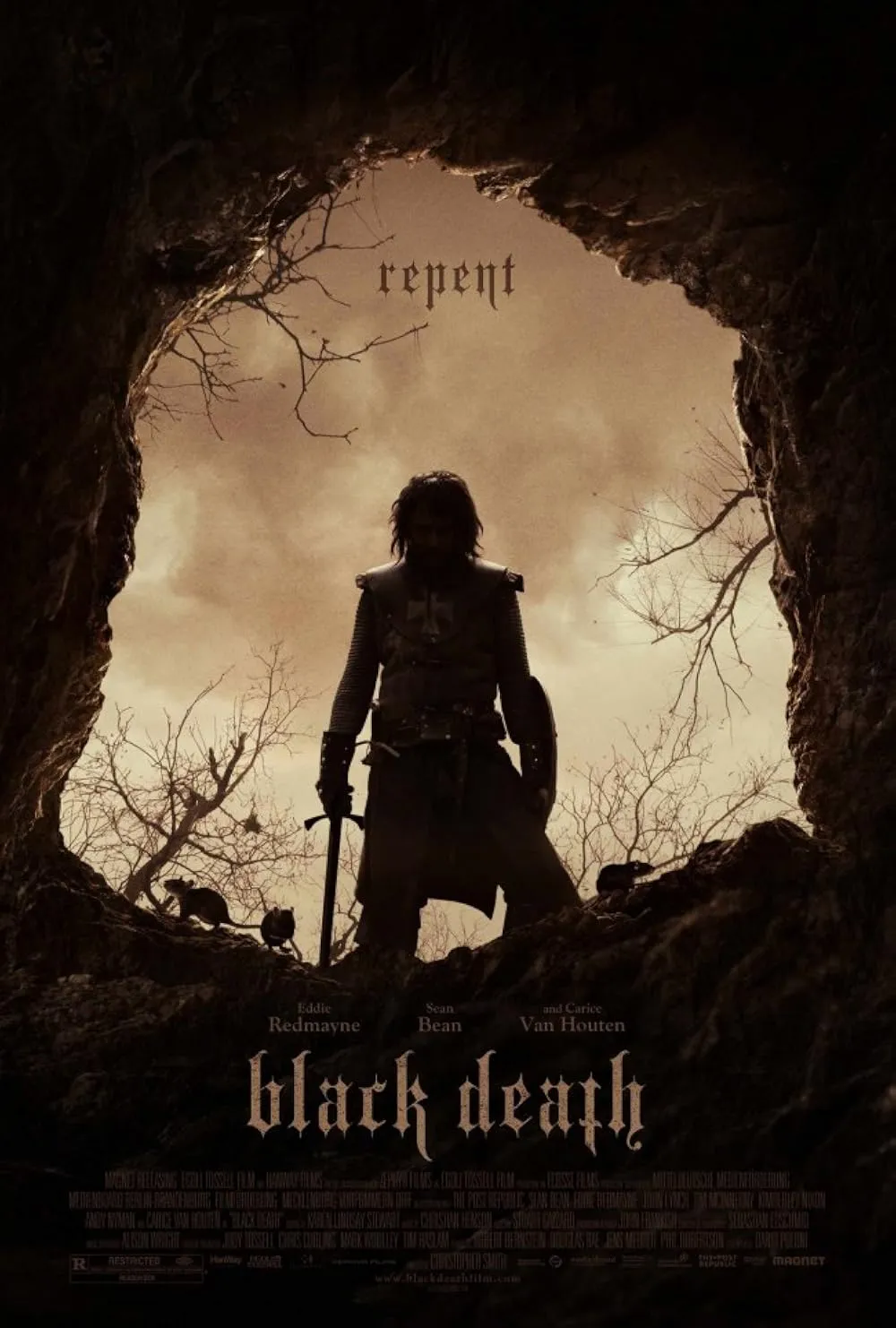Historical accuracy of Black Death

Historical accuracy of Black Death

Characters
Osmund (Eddie Redmayne)
A fictional protagonist whose journey from naive monk to traumatized zealot serves as the film's central narrative arc.
Ulric (Sean Bean)
A fictional character representing zealous faith and the Church's militant response to perceived heresy, possibly inspired by inquisitorial figures.
Langiva (Carice van Houten)
A fictional antagonist representing either pagan survivalism, rationalism mistaken for witchcraft, or genuine heresy within the film's context.
Wolfstan (John Lynch)
A fictional archetype of a pragmatic, weary soldier navigating the brutal realities of the time.
Swire (Emun Elliott)
Fictional member of Ulric's band.
Dalywag (Andy Nyman)
Fictional character embodying the cruelty and mercenary nature of some soldiers of the era.
More characters
Averill (Kimberley Nixon)
Fictional character whose fate drives Osmund's personal motivations and descent.
Hob (Tim McInnerny)
Fictional co-leader of the isolated village alongside Langiva.
Story
Black Death devastating England (c. 1348-1349)
The film's setting during the first, catastrophic wave of the bubonic plague in England is historically accurate.
Widespread fear and social breakdown
The plague caused immense fear, panic, flight from infected areas, and sometimes a breakdown of social order, which the film depicts.
Existence of villages seemingly untouched by plague
While extremely rare due to the plague's virulence, it's conceivable some very isolated communities might have initially avoided infection. The film uses this plausibility for its core premise.
Church envoy sent to investigate necromancy
The specific mission depicted is fictional. While the Church dealt with heresy, organized investigation of village necromancy as the cause of plague avoidance wasn't a typical response in 1348 England.
Belief in witchcraft/necromancy during plague
Supernatural explanations for the plague were common (divine punishment being primary). While belief in magic/necromancy existed, large-scale witch hunts became more prevalent much later, not during the 1348 outbreak in England.
Religious fanaticism (Flagellants) shown
Groups practicing self-flagellation arose, particularly on the continent, believing the plague was divine punishment requiring penance. Seeing them in England provides plausible atmospheric detail.
Brutality/violence of the era
The film portrays a harsh and violent medieval world (banditry, summary justice, torture). This aligns with historical understanding of the period, likely intensified by the plague's chaos.
Isolated village practicing paganism/trickery
The village's immunity being due to isolation (initially) and Langiva's apparent powers being herbs/trickery is a fictional plot.
Lack of effective medical understanding/treatment
The film accurately reflects the powerlessness of medieval medicine against the plague, leading people towards prayer, superstition, or flight.
Osmund's transformation into a witch-hunter
This is a fictional character arc exploring the psychological impact of trauma, loss of faith, and fanaticism, rather than depicting a specific historical trend of 1348.
Crucifixion/hanging as punishments/executions
Methods of execution like hanging were common in medieval England. Crucifixion as a form of torture/execution by villagers is more extreme but reflects the film's brutal tone.
Setting
Mid-14th Century England
Creates a convincing atmosphere of a plague-ridden, fearful, and muddy medieval England through its cinematography and set design.
Monastic Life
Glimpses of monastery interiors and monk's attire are shown, providing a basic setting for Osmund's initial life, though not explored in depth.
Rural landscapes (forests, marshes)
Effectively uses landscapes to portray the journey and the isolation of the village, fitting the English setting.
Costumes (monks, soldiers, villagers)
Costumes appear appropriately functional and drab for the period and characters' statuses, avoiding overly romanticized or clean "Hollywood medieval" looks.
Armor and Weaponry
Arms and armor (leather, mail, helmets, swords, axes) shown seem appropriate for mercenary soldiers and knights of the mid-14th century.
Atmosphere of Fear and Death
Successfully conveys the overwhelming sense of dread, mortality, and despair associated with the Black Death pandemic through visual cues and character interactions.
Depiction of Plague Symptoms
While the effects of the plague are central, the film focuses more on the fear and death than graphic depiction of specific symptoms like buboes.
Religious Beliefs and Practices
Effectively portrays the medieval Christian worldview, including belief in divine judgment, sin, the Devil, fear of heresy, and the rituals of faith and penance.
